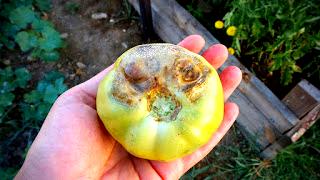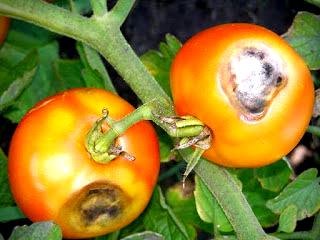4 Simple Ways to Prevent Tomato Blossom Tip Rot from Ruining Your Harvest
This common tomato disease is easy to avoid once you understand what causes it.
One of the most common problems you may encounter when growing your own tomatoes is flower end rot. Everything seems fine as I watch those tiny fruits grow and mature slowly. But then you notice a soft spot on the underside of the tomato that turns black. The tip of the flower struck rot. Tomato lovers take heart, this is not the end of the story. Of course, you may need to toss already affected fruit into your compost pile. But still growing tomatoes on healthy plants can be excellent slicers for your next BLT with these four tips.
What causes tomato rot?
An insect or disease is not the culprit for flower rot in tomatoes. Also known as bottom rot, this tomato problem is caused by a calcium deficiency caused by dry conditions. Tomato plants need calcium in all actively growing parts, from roots to fruits. Calcium is transported from one place to another by water. When there is a shortage of water, for example during a drought, calcium cannot get from the roots to the developing fruits, so flower rot occurs.
Perhaps you've heard of calcium-boosting home remedies like planting your tomatoes in holes with antacid tablets or eggshells to prevent the flower tips from rotting. While these substances won't harm your plants, it's unlikely to make much of a difference since most soils already have plenty of calcium. The bigger problem is not enough water to carry the calcium into the fruit. However, a soil test will reveal whether it is deficient in calcium or other essential plant nutrients.
The first tomatoes of the season are the most susceptible because all parts of the plant are growing rapidly and therefore calcium is in high demand. As the plant moves calcium upward from its roots, the stems and leaves will use it first, so sometimes there will not be enough for ripening fruit, causing the black, mushy flower tips to rot.
How to Prevent
Flower Rot The bright thing about flower rot is that it is not the disease that ends the tomato harvest you've been waiting for. It is not contagious; a symptomatic tomato will not "share" the problem with a neighbor. No chemical control, such as fungicide, is effective. This type of tomato rot is a condition that usually resolves when your plants receive consistent soil moisture. Use these 4 tips to help prevent flower tips from rotting.
1. Water the tomato plants well.
Tomatoes grow best with about an inch of water per week without rainfall or irrigation. Supplement rainfall as needed by watering the tomatoes with a planting hose or a watering can. This is especially important when growing tomatoes in containers where they tend to dry out faster.
Test Garden Tip: To prevent leaf diseases, avoid getting the leaves wet when watering. Yes, rain will obviously wet your plants, which will help spread disease. The drier you can keep the leaves, the better.
2. Add mulch around the tomato plants.
Spread a 2-inch-thick layer of organic mulch over the base of your plants. Materials such as straw, grass clippings, chopped leaves or shredded bark all work well. Mulch helps the soil retain moisture so your plants don't dry out quickly between waterings or rains. It also helps suffocate weeds.
3. Do not over-fertilize.
Too much fertilizer can cause plants to grow faster than they can get the calcium they need for healthy growth. Rapid growth can cause the flower tips to rot. The best way to increase soil nutrients is to add a 2-inch-thick layer of well-decomposed compost to the soil before planting in the spring. Compost will slowly release nutrients and also improve soil structure. Apply fertilizer only if recommended by a soil test, and be sure to follow label directions exactly.
4. Take care of the roots.
The roots are necessary to absorb calcium, which prevents the flower tips from rotting. Avoid disturbing the root zone of a tomato plant so that it can absorb maximum calcium. Avoid hoeing and digging a plant's root zone and keep weeds at bay with a layer of mulch.


